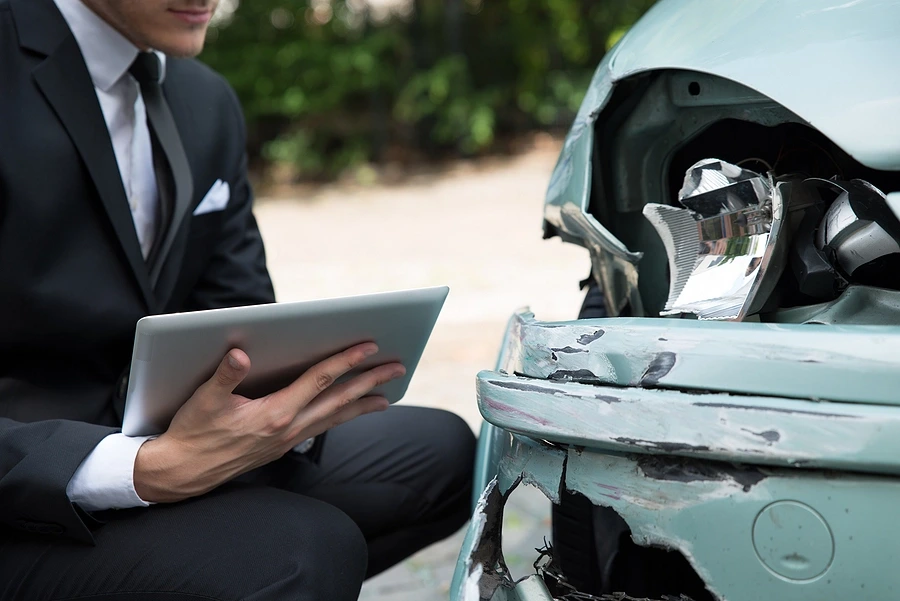Car Accident Lawyer Fairforest

If you’ve been involved in a car accident in Fairforest, you understand the physical, emotional, and financial toll it can take. At Langley Law Firm, we are committed to helping you navigate the complex legal process and fight for the compensation you deserve. As car accident lawyers, we offer legal support and guidance every step of the way. Don’t face the aftermath of a car crash alone—contact Langley Law Firm today at (864) 667-6144 for a free consultation. Let us help you pursue justice and recover what you’ve lost.
Proving Distracted Driving in Fairforest Car Accidents
When you’re involved in a car accident in Fairforest, it’s crucial to determine the cause of the crash. While accidents can happen for many reasons, distracted driving is one of the leading causes of collisions today. If you believe the other driver was distracted at the time of your accident, proving this can be essential for your case. It’s important to understand how to gather evidence, work with experts, and present a strong case in order to hold the responsible driver accountable.
What is Distracted Driving?
Distracted driving refers to any activity that diverts attention from driving. This can include texting, talking on the phone, adjusting the radio, eating, or even conversing with passengers. Distracted driving can be divided into three main categories:
- Visual distractions: Anything that takes your eyes off the road.
- Manual distractions: Anything that requires you to take your hands off the wheel.
- Cognitive distractions: Anything that takes your mind off the task of driving.
Proving that the other driver was engaged in any of these activities at the time of the accident can strengthen your case significantly. However, it’s not always as straightforward as it seems.
Key Evidence to Prove Distracted Driving
To prove distracted driving, you’ll need to gather compelling evidence that demonstrates the other driver’s inattention or lack of focus while behind the wheel. This evidence will serve as the foundation for your case. Here are some ways to gather this evidence:
Police Report and Officer Testimony
The first piece of evidence you’ll likely have is the police report from the accident. In many cases, if a driver is found to be distracted at the scene, the police officer will note it in their report. This could include observations like a driver being on their phone, eating, or acting distracted during questioning. In some cases, officers may even charge the other driver with distracted driving, which can make your case much easier to prove.
In addition to the report, if the officer witnesses signs of distracted driving, they may testify in your case. Officer testimony can be incredibly valuable in a legal setting.
Cell Phone Records
One of the most common ways to prove distracted driving is through cell phone records. If you suspect that the other driver was texting or talking on the phone when the accident occurred, their cell phone records could confirm that. These records may show the time of calls, texts, and app usage that coincide with the crash.
However, obtaining these records requires the assistance of your lawyer. In some cases, a subpoena may be necessary to access the driver’s cell phone records. Your attorney will work to ensure that the proper legal steps are taken to retrieve this information.
Witness Statements
Witnesses to the accident may be able to provide valuable insight into the other driver’s behavior leading up to the crash. If someone saw the other driver texting, talking on the phone, or engaging in any other distracted behavior, their testimony can be critical.
Eyewitnesses can also provide details about the driver’s reactions and whether they seemed distracted or unaware of their surroundings. If there were pedestrians, passengers, or other drivers who witnessed the event, be sure to take note of their contact information. Your lawyer will reach out to these witnesses to gather statements.
Traffic Camera Footage
In certain locations, traffic cameras may have captured the events leading up to the accident. If you can locate traffic cameras near the scene of the accident, it’s worth checking if the footage shows the other driver engaging in distracted behavior. While not all traffic cameras are equipped with video recording, it’s still important to check for this potential evidence.
If you find relevant footage, make sure it’s preserved quickly. Video evidence can be incredibly persuasive in a distracted driving case.
Vehicle Damage and Accident Scene Analysis
Sometimes, the accident scene itself can provide important clues about distracted driving. For example, if the other driver failed to brake before the collision, it may indicate they were distracted or not paying attention to the road. Similarly, if the driver was involved in a rear-end collision, the lack of braking could suggest they didn’t notice traffic slowing down in time.
Your attorney may work with accident reconstruction specialists to analyze the crash site, review skid marks, and study the damage to both vehicles. This analysis can provide more context as to why the accident occurred and whether distraction played a role.
Driver’s Behavior After the Accident
The behavior of the other driver after the accident can also be telling. If the driver appeared agitated or attempted to hide something, such as putting their phone out of sight, it could suggest they were distracted.
Some drivers may even admit to being distracted, especially if they were caught in the act, like texting or adjusting their GPS. If this happens, be sure to report it to your lawyer. However, it’s not always easy to get the other driver to admit fault, so relying on physical evidence is often necessary.
Expert Testimony
In some cases, accident reconstruction experts or distracted driving specialists can testify in court about the likelihood that distraction caused the accident. These experts can provide insights into driver behavior, how distractions impact reaction time, and how that might have played out during the crash.
While expert testimony is not always needed, it can add extra weight to your case if other forms of evidence are inconclusive.
Legal Steps to Take After an Accident
If you believe that the other driver was distracted, it’s important to act quickly. Preserving evidence is critical, and there are several legal steps you should take following the accident:
- Seek medical treatment: Your health should be your first priority. Get checked out by a doctor, even if you don’t feel injured.
- Contact a lawyer: An experienced personal injury lawyer will help you gather evidence, communicate with insurance companies, and handle the legal aspects of your case.
- Document everything: Keep a record of all communications, medical bills, police reports, and any other documents related to the accident.
- Notify your insurance company: Report the accident to your insurance company, but be cautious about providing a detailed statement before speaking with a lawyer.
Get the Justice You Deserve with a Car Accident Lawyer in Fairforest
Navigating the aftermath of a car accident can be overwhelming, but with the right legal support, you don’t have to face it alone. At Langley Law Firm, our car accident lawyers are here to provide you with compassionate guidance and representation to ensure you get the compensation you deserve. Whether you’re dealing with medical bills, lost wages, or emotional distress, we’re dedicated to protecting your rights. Call Langley Law Firm today at (864) 667-6144 for a free consultation and take the first step toward securing the justice you deserve.
